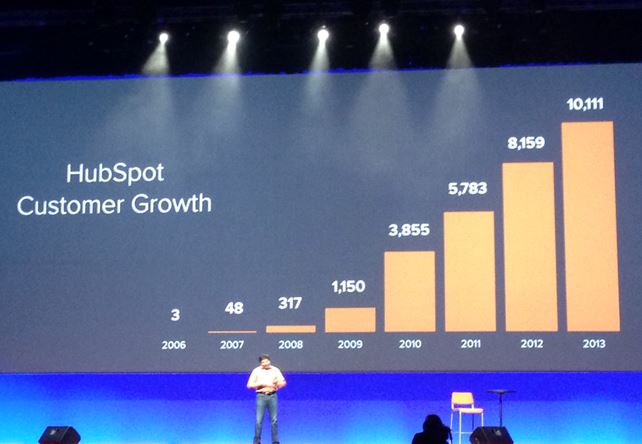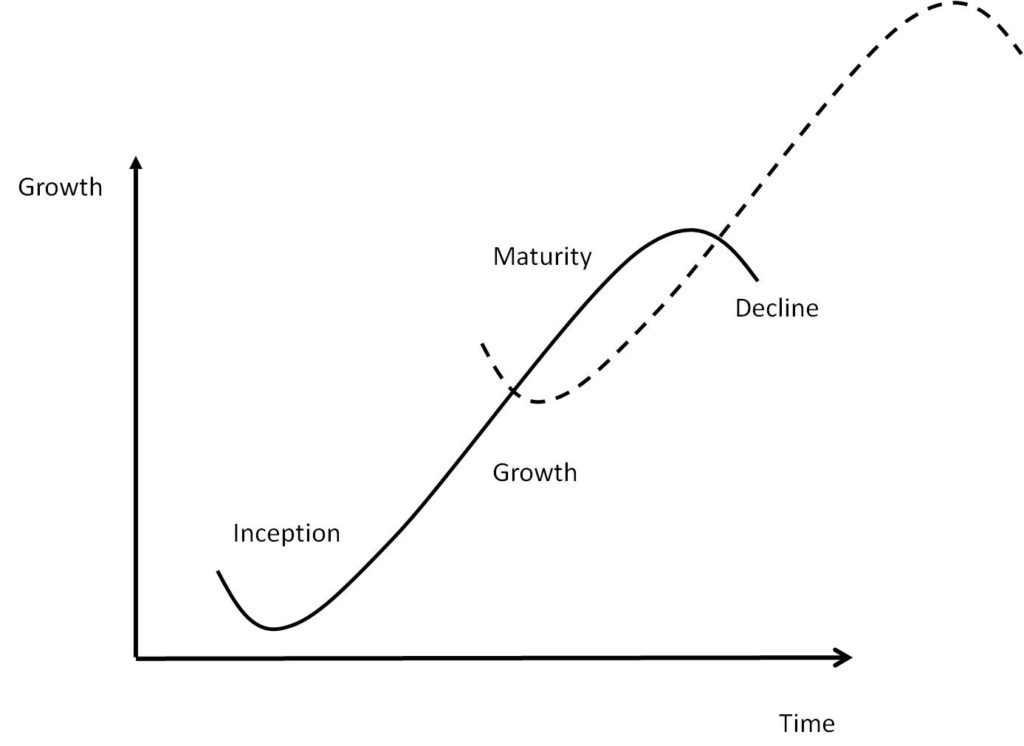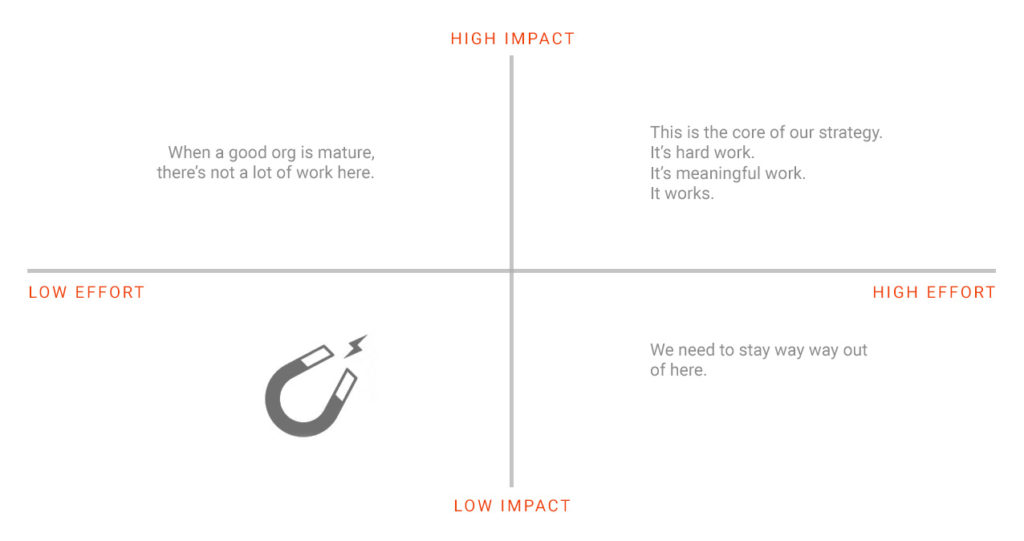What is Growth Marketing?
Article originally published in March 2019 by Stuart Brameld. Most recent update in March 2023.
Request a demo
Project management for growth and agile marketing professionals. Map your acquisition funnel, integrate analytics and run agile experiments.
Experiment results
Recent experiments results include competitor SEO, AI-driven content, exit-intent modals and AB testing homepage headlines.
Case study
"We are on-track to deliver a 43% increase in inbound leads this year. There is no doubt the adoption of Growth Method is the primary driver behind these results."
![]()
Certified
We are vetted mentors with Growth Mentor and a partner with the Agile Marketing Alliance.
Growth marketing helps companies move away from the big bet culture of traditional campaigns and brand marketing practises in favour of a rigorous process that guarantees impact and predictable results.
In this article we explore how it helped HubSpot become one of the fastest growing software companies of all time, and why you may wish to consider the approach in your business.
The Machine That Fuelled HubSpot’s Growth
HubSpot is one of the fastest growing software companies of all time. Founded in 2006 it grew to a valuation of over $100 million and a listing on the New York Stock Exchange in just 8 years.

A year before going public HubSpot wanted to grow the new HubSpot Sales product to a $100M line of business. In order to achieve this, they established a new team focused on marketing and growth led by Brian Balfour, now one of Silicon Valley’s most prolific growth marketers.

Previously VP Growth @ HubSpot, Entrepreneur In Residence @ Trinity Ventures.
HubSpot’s Marketing Machine
This post describes how Brian built HubSpot’s growth marketing team, and what he describes as the “growth machine” that was the foundation to its success.
There is no silver bullet or “one thing” you can do to change the trajectory of your marketing team. Growth is not about hacks, quick-wins, money, luck or timing, it is about continually following a proven process.
“Growth has nothing to do with tactics and has everything to do with process. Growth is not about the terminology or the tactics, it’s about a change in our mentality, process, and team.”
Brian Balfour, VP Growth, HubSpot
Unsurprisingly, following HubSpot’s success, the same approach has been adopted by many of the world’s fastest growing companies including Facebook, LinkedIn, Uber, Atlassian, Pinterest, Survey Monkey, AirBnB, Slack and IBM.
The discipline has become known as Growth Marketing.
What Is Growth Marketing?
Growth marketing helps companies move away from the big bet culture of traditional campaigns and brand marketing practises in favour of guaranteed impact and predictable results. It does this through 3 core functions (hat tip to Josh Lachkovic):
- Deep customer understanding
- An experimentation process that improves over time
- Rapid execution
The growth marketing process uses principles from lean manufacturing and agile development to ensure marketing team performance can be continuously tracked and optimised inline with team KPIs. Sometimes called “scientific marketing” or “growth science” it is a process that applies the scientific method to grow a business.
Growth marketing is a system that helps marketing teams define key objectives and success metrics, and translate these high-level objectives into individual actions. As with any business strategy it ensures:
- An action-plan
- A narrow focus on the most important things
- Real individual owners of actions
The basic challenge in strategy execution is to translate broad ideas about what makes you competitive at the organisation level into concrete actions for progress at the individual level.
Graham Kenny, CEO Strategic Factors (https://hbr.org/2019/10/5-simple-rules-for-strategy-execution)
Why you need a Growth Marketing strategy
There are 5 key problems with traditional marketing teams that the growth marketing process is designed to solve.
1. Intelligent decisions are not based on assumptions or gut feel.
Traditional marketing teams decide what to do based on assumptions, gut-feel, or the highest-paid person’s opinion (aka the HiPPO, for short). Every time you or your team makes a guess, you are introducing bias and risk into what you do.
The best marketing teams put tests out into the wild and let the user, their actions and the data from those actions inform their next steps. You can trust your gut, make some changes and hope for the best, or use a scientific testing process to make real progress.

2. What works for others is not going to work for you.
Copying what your competitors are doing, or what you see other companies doing online is not a strategy. There is no “one-size-fits-all” advice when it comes to scaling marketing.
The best marketing teams define a strategy that fits their unique circumstances. Similarly, your marketing strategy should leverage:
- Your ideal customer
- Your customer journey
- Your product/service differentiators
- Your resource availability
- Your previous learnings and insights
You need a process to find the unique combination of things that are going to work for your business.
3. Growth is the sum of a lot of small parts.
There is no one thing that will alter the trajectory of your marketing efforts or dramatically increase results. Implementing the latest marketing tactic or “growth hack” is unlikely to have any material impact on your business long term. There are no silver bullets.

The most successful marketing teams achieve success through a continued focus, execution and optimisation of activity that builds momentum over time. Successful marketing is the sum of a lot of small parts. You need to find the successful combination of things that will work for your business.
4. The effectiveness of all marketing tactics decreases over time
New marketing opportunities continuously arise as new consumer platforms and information sources (Facebook, Instagram, SnapChat etc) gain widespread adoption. However, keeping on top of these technology trends and new customer acquisition opportunities is increasingly challenging.
In addition to this, the window of effectiveness for specific tactics and strategies within any given platform is decreasing. As new tactics become adopted widely the effectiveness of that new tactic starts to diminish rapidly.
This is consistent with the Sigmoid (or S-curve) which states that everything in life begins, thrives, declines and dies.

What worked well with Facebook’s advertising platform 12 months ago is no longer effective, those tactics grew, reached maturity and are now in decline. Teams that are not constantly experimenting will be left behind.
5. Every marketing team has finite resources.
We live in a world with finite resources and unlimited expectations of results. A good marketing strategy helps to ensure marketing resources are allocated to the areas where you can gain competitive advantage.

Marketing teams need to ensure they are maximising the use of their resources by putting a relentless focus on high impact work.


